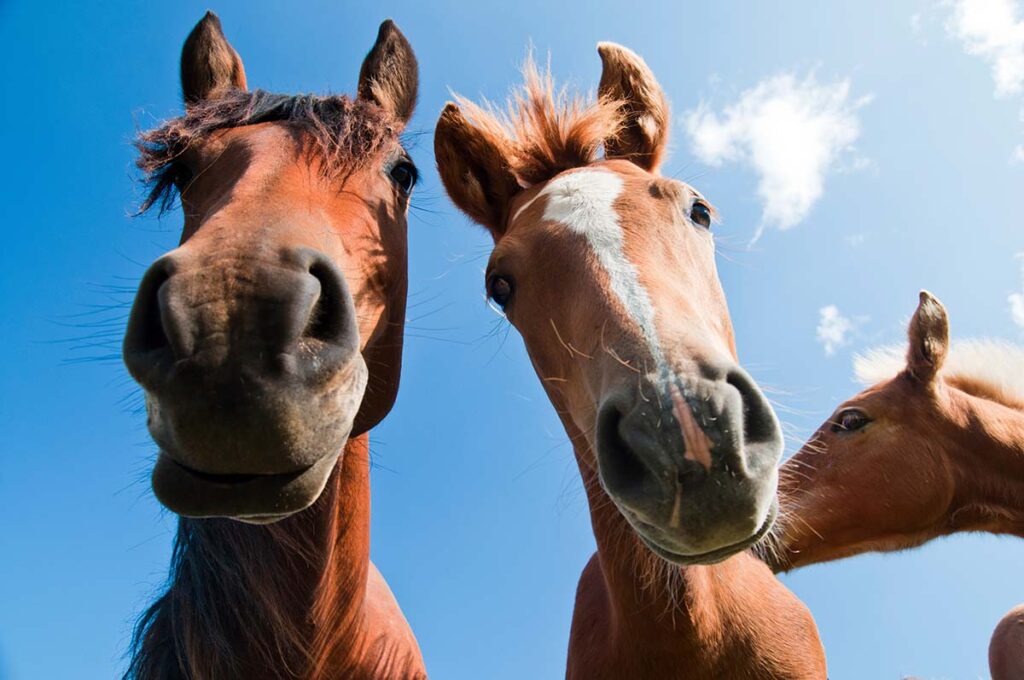Come fall, pumpkins become decorative (and dietary!) staples in many homes. If you’ve got some of these seasonal squashes sitting around, you might wonder, “Can horses eat pumpkin?” You bet they can!
Pumpkins—including the skin, pulp, and seeds—are safe for horses to eat as occasional treats. But it’s a good thing you’re doing your research before carving out a buffet of gourds and squashes. Not all fruits and vegetables are safe for equine consumption. In this article, we’ll explain why horses can eat pumpkin and provide pumpkin treat ideas.
Pumpkin Nutrient Profiles
Let’s review the nutrients pumpkins contain so you have a better understanding of what you’re feeding your horse.
Pumpkin has a high glycemic index but a low glycemic load. Put into simpler terms, this means pumpkins, when fed in moderate amounts, don’t cause a sudden spike in blood sugar levels. This is a positive if your horse has metabolic or endocrine issues and requires a low-sugar diet. Pumpkins are also high in fiber, which benefits equine digestive health.
Pumpkins have relatively high potassium levels. Still, the potassium content in a reasonable portion of pumpkin is negligible in your horse’s overall diet. If your horse has the muscle disorder called hyperkalemic periodic paralysis, however, play it safe by skipping the pumpkin treats. With these horses you want to limit potassium intake, which can exacerbate the condition.
A pumpkin’s seeds are rich in antioxidants. In humans, they’ve been shown to increase nitric oxide levels, which improve blood flow and circulation. While similar benefits haven’t been confirmed in horses, we do know the seeds are safe for equine consumption and might even be good for them.
Tips When Feeding Pumpkin to Horses

While pumpkin itself makes a safe horse treat, you’ll want to use common sense when feeding it to your horse. Keep these considerations in mind:
- If you’re repurposing that jack-o’-lantern as a horse treat, make sure you’ve cleaned out any wax and that it’s not starting to decay.
- Remove the stem from whole pumpkins so your horse can’t choke on it.
- Keep pumpkin rations to a few cups a day, as any sudden increase in a new food type can upset your horse’s GI tract.
- Don’t experiment with other gourd and squash species, as some aren’t horse-safe.
Pumpkin is also an acquired taste, and your horse will likely either enjoy it or flip his lip up at it.
Pumpkin Horse Treat Recipes
Create tasty, all-natural homemade horse treats with one of these recipes:
- Scrape out the pumpkin’s soft flesh and pulp, and mix it with oats, wheat bran, molasses, and a dash of cinnamon. Dole out treat-sized portions on a baking sheet, and bake at 300 degrees F for 20 minutes.
- Mix soaked alfalfa pellets with a can of pumpkin puree (not pumpkin pie filling) that has no added sugar or spice. Bake quarter-sized treats on a baking sheet at 400 degrees for 45 minutes.
You can add healthy ingredients like flaxseed, chia seeds, or apple cider vinegar to either of these recipes.
If your horse is obese or metabolic, skip the sweet treats and opt for a simpler alternative. For instance, you can always use a small pumpkin as a stall toy. You can also chop one up and feed it like a carrot or add it to your horse’s meal.
Take-Home Message
Knowing what your horse can and shouldn’t eat is important for keeping him healthy. Fortunately, most horses can enjoy pumpkin, either au naturel or as part of a festive treat. This season, chop one up and see if your horse says yea or nay!
Related: Can Horses Eat Fruits and Vegetables?
Are you enjoying this content? Sign up for My New Horse’s FREE newsletter to get the latest horse owner info and fun facts delivered straight to your inbox!








